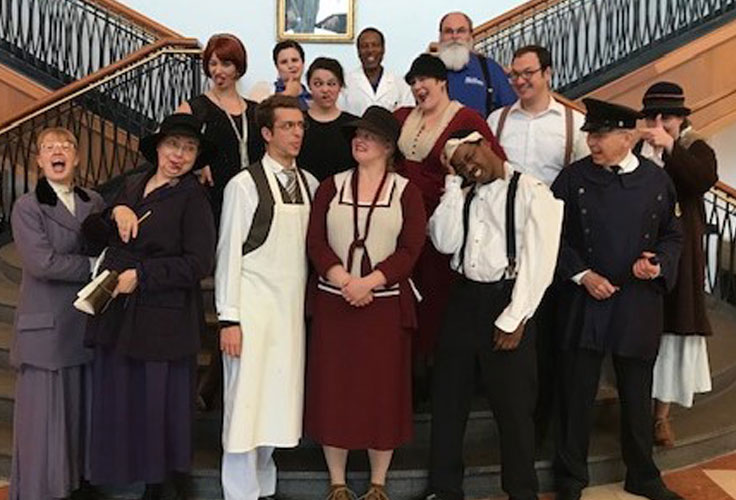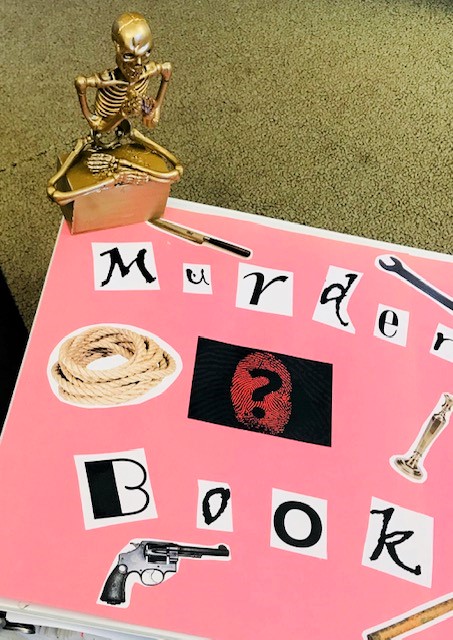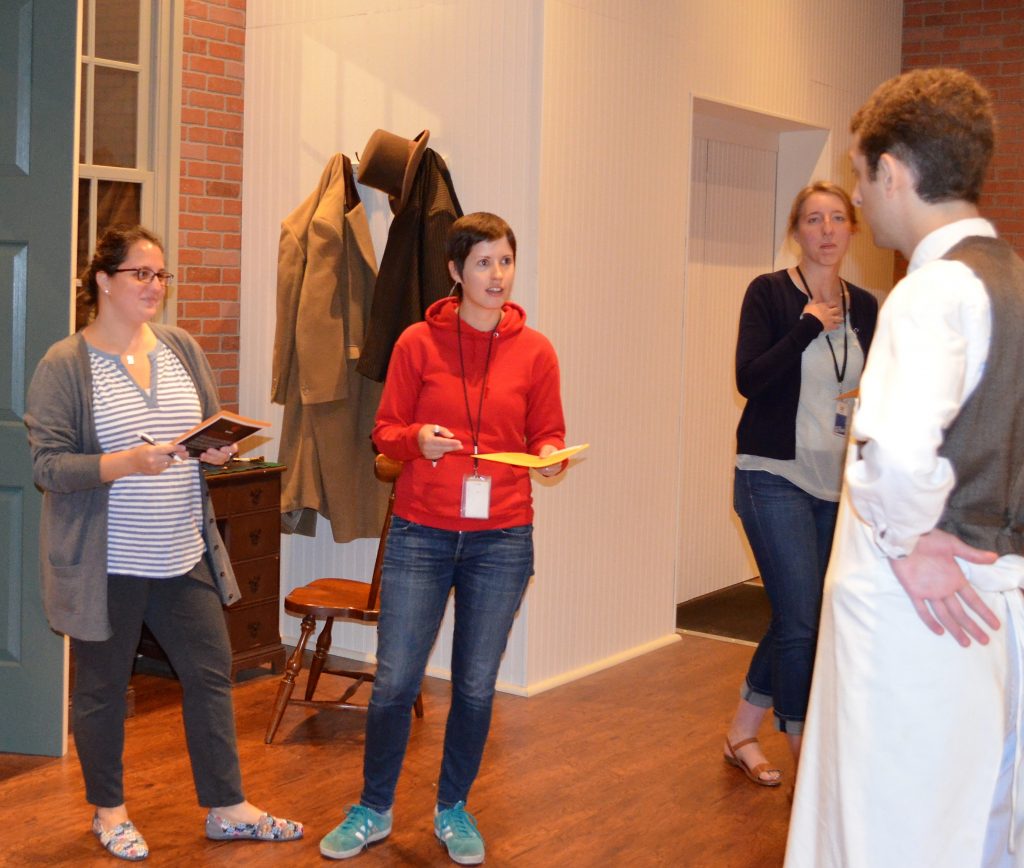
Plan your visit
Making a Murder Mystery: Behind the Scenes of Whodunit?
October 17, 2018

This Friday, we are staging a murder at the History Center of epic proportions. During Whodunit?, it’s up to you to help us figure out who the murderer was, what weapon they used, and where the murder took place. For one night only, our History Lab will be transformed into a crime lab, the Boardroom into an evidence room, and a cast of colorful characters will come to life to answer your questions.
But, how do we put together a night of mysteries and intrigue?
Like most things at the History Center, it starts with a lot of research. Each mystery we put together is based on a historic crime from Indiana’s past. We scour newspapers, books and archival documents to build the backstory and call up our archivist friends from across the state to build the case. Each suspect requires their own research with census data, city directories, testimonials and court records help bring each character to life. (Shout out to our amazing IUPUI Public History interns, Meaghan and Kara, for their research prowess on this project.)

All of our research for this year’s program fills this 2-inch “Murder Book.”
You know that saying, “it takes a village?” Planning programs is all about teamwork, and Whodunit? is no exception. Dan from our Museum Theater department and I begin plotting about 10 months out, choosing the best ways to reinvent our exhibit spaces and crafting the most suspicious of suspects. Our Exhibitions department help transform our building for the evening: designing new signs, staging faux historic pictures and even building a temporary set. The Marketing team creates the look of the program, making handouts and even creating new elevator signs. And that’s not to mention our librarians help us find historic maps and artifacts that we can use to hide clues, the development department brings sponsors to the table (Thanks Upland Brewing and Proximo Spirits!), and visitor services who make selling tickets a breeze. I’m telling you the list could go on and on.

A couple of our staff members questioning a (guilty?) suspect during last year’s rehearsal.
About three weeks out, we stage a rehearsal for staff to test out our mystery. They put on their detective hats, question our actors and see if they can figure out the culprit. Their success (or failure) helps us tweak the game, so that it is not too hard and not too easy, but just right.
From there, it’s all about the finishing touches. Sets are polished, characters are honed, trophies are spray painted the appropriate shade of gold, and fake blood pools are poured.
Excited to help us solve this year’s caper of the philandering prosecutor? Join us on Friday for more mystery, fun, and loads of surprises I can’t wait to share with you.









